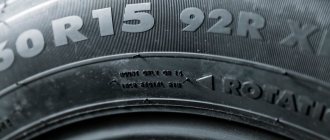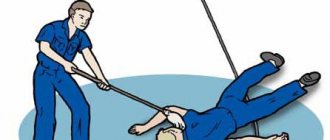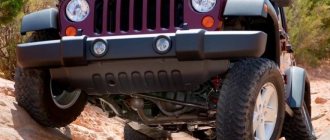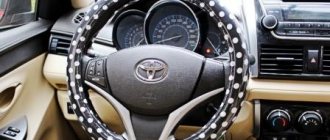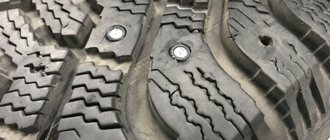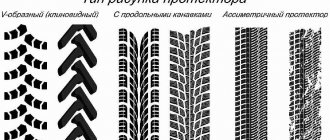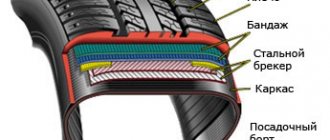Marking of stingrays and calculation of basic parameters
European markings are applied to the side of the slope. It consists of three numbers and one English letter, which indicates the design of the cord. An example of marking is 225/40 R18. The tire width is indicated in the very first place.
It is given in millimeters. In the example under consideration, the width of the wheel is 22.5 cm. When measuring it, all kinds of convexities arising from letters, pictograms and numbers of markings and other elements of the side surface of the ramp are not taken into account.
The profile height is given by the second digit following the fraction. Please note that the value is expressed as a percentage and not in millimeters or inches. The numbers reflect the ratio of the profile height to the width of the slope. In this example, 40 percent of 225 millimeters is 90 mm.
The tire cord design is indicated by a letter index. Most wheels of modern passenger vehicles are built of the radial type. Therefore, the Latin letter R predominates in the markings. The diagonal structure is almost supplanted. The marking uses the symbol D to designate it.
Decryption of data on the slope
The tire fit size is given after the letter index. Its value is indicated in inches. In order for the ramp to fit the car, the landing size must be equal to the diameter of the rim. In the example shown, it is 18 inches.
The external size of a vehicle wheel can be easily calculated from the ramp markings. To do this, add twice the tire profile to the rim size. At the same time, it is important to bring everything to a unified measurement system.
Table - Description of marking features
| Symbol | Addition |
| Width | The most popular models range from 150 to 260 |
| Profile height | If the value is less than 50%, the rubber is called low-profile, and if marked 80% or more it is considered high-profile. |
| Cord | Intertwined diagonally or radially |
| Rim diameter | For passenger cars it ranges from 11″ to 26″ |
Marking overview
How does a low profile affect the condition of the suspension?
This is a fairly common question that deserves an answer. Opponents of low-profile tires are confident that they actively destroy the suspension and their disadvantages significantly outweigh all the advantages. And those who choose a low profile find it quite comfortable and safe for the vehicle suspension design.
In fact, there are 2 possible scenarios when the car has wheels with a low profile.
- This is a machine that was originally designed for low-profile tires. These include vehicles that come with a low profile as standard equipment from the factory. The advantage is that the suspension design is adapted to harsh and sometimes extreme use. Despite the profile, the suspension will work quite effectively and maintain its performance during the stated period.
- The car was not initially adapted for driving on low-profile tires. There is no talk of any adaptation here. Hence such problems as rapid wear of suspension elements and its failure. Also, the use of a low profile in such situations increases the likelihood of deformation of the wheel rims, failure of the power steering, etc. Protective ribs are not able to protect against damage to the disk if the wheel ends up in a hole.
One of the main problems of the tires under consideration is considered to be accelerated wear. In theory, all tires are designed to provide the required level of operational stability and meet load and speed ratings.
In theory, everything looks exactly like this. That is, low-profile products can last just as long as regular standard car tires. But theory does not coincide with practice.
These tires are usually used by those who prefer an aggressive driving style. Plus, the tires are more affected by driving over uneven surfaces, falling into potholes, hitting curbs, impacts, etc. All this contributes to accelerated wear and reduced service life.
Still, tires with a low profile are a sporty version of car tires. They have better dynamic and speed characteristics, they contribute to more efficient braking, but the service life is still lower.
Choosing low-profile tires is worth it for those who drive their vehicle only around the city and on fairly good asphalt, and also do not use the car excessively often. Even if the road is good, a long trip on such tires will be a test for the driver and his passengers. It's all about a lower level of comfort, acoustic effect and lower reliability indicators compared to standard tires.
Determination of basic rubber parameters
Markings that indicate the profile height are applied to the sidewall of the tire. It is performed in large symbols, so it will not be difficult to detect it.
Labeling example
European marking
If the store does not have access to the sidewall of the tire, then very often you can find the necessary information on a sticker. It is usually placed directly on the tread. If there is no sticker, you can find out the slope profile and other parameters in the tire documentation.
Sticker on the sold stingray
Features of a low profile tire
What characteristics does a low profile tire have? If in a tire the ratio between the profile height and its width is no more than 70%, then this tire is called low-profile. Every year the speed of cars produced is increasing, which means that there is a need for good braking. The brake disc is limited by the size of the rubber, while the width of the rubber increases.
Low profile tires have the advantage of having the best speed performance compared to other tires. Cars with such tires can reach speeds of up to 240 km/h. For cars with a small displacement engine, T-type tires are selected, their speed reaches 190 km/h, and they are suitable for installation on most cars.
The emergence of low-profile tires was facilitated by the emergence of cars with high speed characteristics and powerful engines. For high-speed cars, the main condition is excellent tire braking ability and strong grip on the road surface.
Influence of tire profile parameters on vehicle operation
You can find out what parameters a safety wheel has for a particular car from the documentation for the car. You should not deviate too much from the recommendations, since the profile affects:
- increased risk of destruction of the ramp, rims and chassis;
- control over the car;
- speedometer measurements;
- the severity of the reaction to commands from the driver;
- machine stopping efficiency;
- tire pressure recommendations;
- the maximum speed that the car can achieve;
- indications of the distance traveled;
- fuel consumption;
- acceleration.
Comparison of stingray profile
Photos of the appearance of wheels with low-profile and full-profile tires
The height of the profile is most noticeable when driving along an arc trajectory. At this time, the rubber deflects due to significant lateral loads on the slope. Because of this, the tire contact patch is reduced. To maintain excellent handling, minimal tire slip is required. In this case, even at high speed when cornering, an acceptable response to commands from the steering wheel will be maintained.
Contact patches when driving along an arc path on tires with a different profile
The optimal balance between ride softness and handling can be achieved only by maintaining a certain tire pressure, taking into account the height of their profile. It is recommended to inflate low tires much more.
This allows you to give it additional rigidity, which manifests itself in sharp control. The table below shows the pressure values recommended by automakers for the slopes of passenger cars.
Table - Recommended pressure
What you need to know when buying a tire
Before buying low-profile tires, it is worth considering the terrain in which it will be used. If the roads are not smooth, without holes or cracks, then it is better to refuse to buy low-profile tires and take a closer look at high-profile tires. In most cases, you can sacrifice the car's high speed and beautiful tires for the sake of reliability and maneuverability. Low-profile tires are easily deformed even from a small bump on the road.
A tire with a high profile is easy to install, every auto repairman can repair it, while at the same time, low-profile tires may not be repairable due to the presence of old-style machines in many auto repair shops.
If a motorist has the idea of replacing old tires with low-profile ones, then the height of the tire will decrease and he will have to purchase high rims. The fashion for beautiful tires puts many car enthusiasts at risk; you should always follow the recommendations from the car manufacturer when the question of changing tires arises. A strictly defined type of tire is installed on each car, otherwise you will have to visit auto repair shops frequently, and road safety will also be significantly reduced.
Review of low profile tires
To improve the aesthetic appearance of the car and give it sporting properties, many car owners resort to installing low-profile tires. As a result, the driver receives excellent directional stability and a sharp response to steering turns. The main advantages and disadvantages of low profile tires can be found in the table below.
Table - The main advantages of low-profile tires
| pros | Notes |
| Unlocking the car's speed capabilities | Only low-profile tires can unleash the full power of the engine. |
| Improving braking intensity | Increased rigidity and stability of the contact patch lead to a decrease in braking distance |
| Appearance | A vehicle with low-profile tires looks more prestigious, sporty and stylish |
| Increased machine control | The tires provide good directional stability on a straight line and steering control when cornering. |
| Reducing fuel consumption | Reduced rolling resistance |
Table - Analysis of the disadvantages of using low-profile tires on passenger vehicles
| Flaws | Add-ons |
| Sensitivity to road imperfections | Increased load on the vehicle's chassis, which reduces its service life |
| Resource reduction | Rapid wear of tires and suspension components |
| Additional expenses | Very few cars have standard low-profile wheels, so owners need to purchase a set of oversized wheels |
| Violation of speedometer and odometer readings | Low-profile tires often inflate instrument readings |
| Effect on vehicle clearance | Reducing ground clearance |
| Difficulties beyond the asphalt | Even a relatively good country road can bend a disc or damage the suspension |
| Reduced comfort | The driver begins to feel all the imperfections in the road surface |
Low profile tire
For speed lovers
The choice of tire profile and its fit must be taken seriously, because with an incorrectly selected alloy wheel, the possibility of its deformation increases.
Tire markings
When purchasing tires, you should pay attention to the markings that indicate the tire profile. There are several types:
- Standard
- Performance (low profile);
- High performance (low-fit sports tires).
When comparing standard and low-profile tires, it is worth noting that the difference between a low-profile tire is the ratio of height and width; this figure is marked on the tire. Thus, if the number 45 is on the 235/45R17 model, this means that this indicates the ratio of the height and width of the profile. The indicated number is the tire series. With a number below 55, the tire is considered a low-profile tire.
tire marking
The first modern low profile tires were made by the manufacturer Michelin, their series 88, and they were installed on every car. In 1978, in Italy, Pirelli launched the production of cars with low-profile tires; these cars were extremely popular, so tire manufacturers tried to set up production for these cars.
High profile tires
High profile tires are often called full profile tires. They are designed for travel on poor quality roads. Most often, such ramps are found on crossovers, pickups, SUVs and buses.
According to driver reviews and expert opinions, a list of the main advantages and disadvantages of full-profile tires has been compiled, which can be found in the tables below.
Table - Main advantages of full-profile slopes
| Advantages | Note |
| Convenient for winter use | The car rarely gets stuck in snowdrifts and shows better handling on slippery road surfaces |
| Positive impact on suspension life | High-profile rubber absorbs shock, reducing stress on suspension components |
Table - Disadvantages of using full-profile ramps on vehicles
| Flaw | Note |
| Impact on odometer and speedometer accuracy | Full-profile tires underestimate the readings, which may result in a fine. |
| Poor handling at speed | The car yaws when driving in a straight line and responds slowly to steering inputs. |
| The need to purchase new rims | To install a high-profile tire, a reduced-diameter wheel rim is required |
High profile tire
Tread patterns under different driving conditions
For high-speed cars, low-profile tires with a tread pattern similar to racing cars are used. It is distinguished by a number of characteristics: increased speed, improved traction during maneuvers, which means the car will sway less, it is more stable and controllable. When braking, these characteristics are a huge advantage.
low profile tire protectors
Despite all the advantages, such a tire has a number of disadvantages, especially for Russian roads. The service life of the tire is very short, precisely because of the condition of our roads, you can also forget about a comfortable ride, because the car will react sharply to every imperfection in the road, with strong shocks, without shock absorption.
A low profile index corresponds to a low-quality tire, and the car’s suspension will react sharply to uneven roads. Low-profile tires create a lot of noise on the road, as there are more points of contact with the road surface. When choosing this tire, you need to power the steering, otherwise the car may become uncontrollable.
Wide-profile special low-pressure tires
This type of rubber is very highly specialized, therefore it is extremely rarely used on passenger cars. The wheel with a wide-profile low-pressure tire has a large support area. This allows you to reduce the generated specific pressure on the ground.
Appearance of wide-profile low-pressure tires
The use of these ramps is justified in places with poor road surfaces, off-road conditions and soft terrain. This tire is especially popular on agricultural vehicles.
